Top 10 Backyard Vines With Fall Flair
Updated: May 31, 2023
Grow these fall vines to brighten your autumn landscapes with blazing foliage, colorful berries and fetching flowers.
Vining plants aren’t for everyone. They need proper support, they can require a little more maintenance and many can quickly get aggressive. But with a little research and planning, you can choose perennial fall vines that look charming throughout the growing season, staging a grand finale just as summer wanes. Check the invasive species list in your area before planting, and then enjoy the top picks that will work well in your backyard.
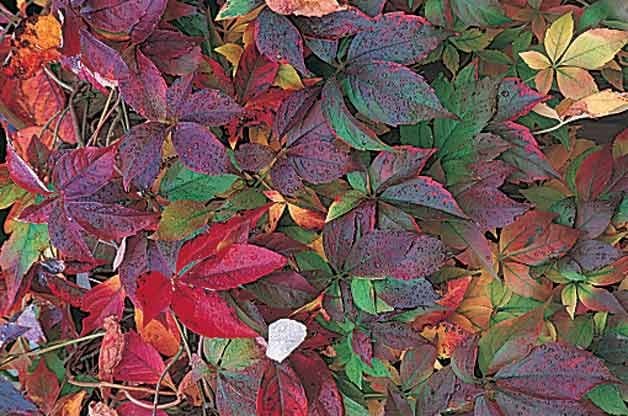
Virginia Creeper
(Parthenocissus quinquefolia, Zones 3-9)
Stand back and watch this native vine take off. It provides thick green summer coverage and contributes to autumn’s color show with leaves that shade to flaming red and deep burgundy. Keep pruners handy to keep this vigorous grower in bounds. It can be difficult to remove from buildings. Also, don’t grow up wood or vinyl siding.
Why we love it: People enjoy the bright-red foliage, while birds dote on the blue-black berries.
Psst—try the top 10 easy-to-grow native plants in your landscape.
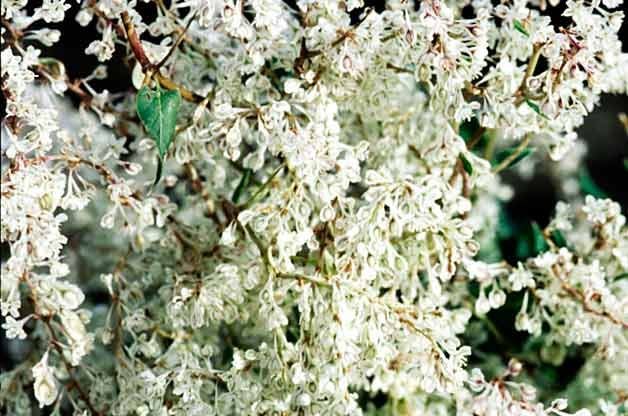
Silver Lace Vine
(Polygonum aubertii, Zones 4-7)
You’ve got to love a perennial that looks attractive throughout the growing season. These fall vines produce narrow pyramidal clusters of fragrant creamy flowers from midsummer through frost. It is invasive in some areas, so look for Sweet Autumn clematis as an alternative in those areas.
Why we love it: It has the look of Sweet Autumn clematis but grows up to 15 feet in the first year—which means more flowers faster! What’s not to like about that?
Check out the 9 best fall shrubs to grow this season.
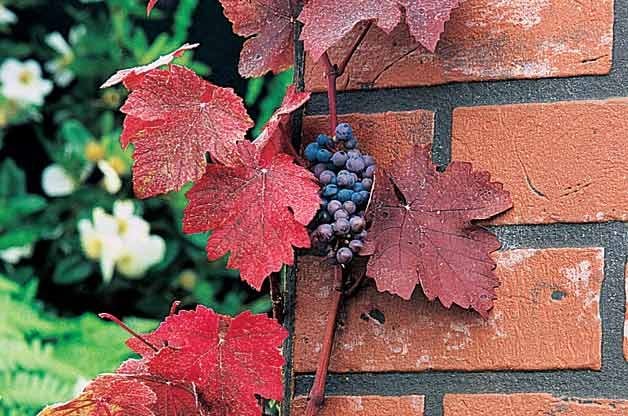
Ornamental Purple-Leaf Grape
(Vitis vinifera ‘Purpurea,’ Zones 6-9)
This compact plant produces somewhat bitter grapes but is beloved for its foliage. The leaves turn from green in spring to purple in summer and then to blazing red in fall.
Why we love it: In addition to the colorful leaves, these easy-to-grow fall vines produce black grapes that provide an extra punch of color in autumn.
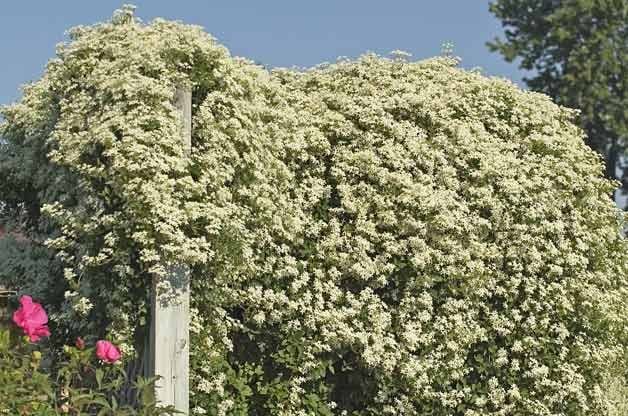
Sweet Autumn Clematis
(Clematis paniculata, Zones 4-9)
This gotta-have-it vine stops garden visitors in their tracks, thanks to clouds of late-season blossoms on stems growing to 20 feet. The flowers are followed in fall by masses of silvery seed heads, which we think are almost as pretty as the blooms.
Why we love it: The smell! The fragrance of these blooms is incredible and a welcome addition to any garden.
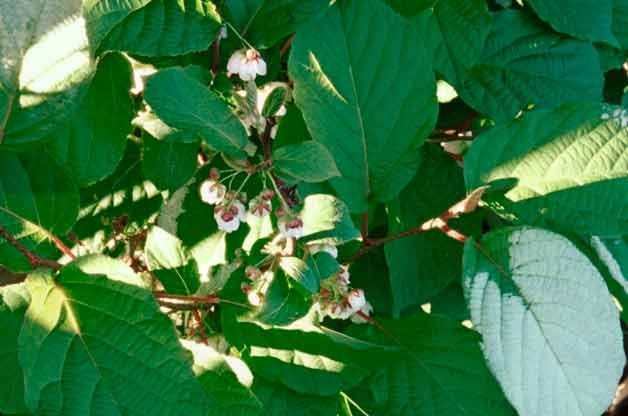
Variegated Kiwi Vine
(Actinidia kolomikta, Zones 4-8)
Forget flowers—this vine’s value is in its foliage and fruit. Splashes of white or pink mark heart-shaped green leaves, while tiny greenish-yellow edible fruits sprout on female plants in fall.
Why we love it: Exotic leaves and unusual fruits growing on 20-foot stems make this a visual standout. Note: You need one male plant to pollinate every three to five female plants.
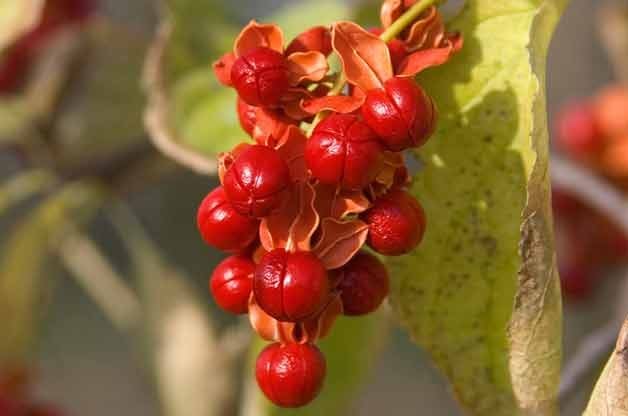
American Bittersweet
(Celastrus scandens, Zones 3 to 8)
A must for fall arrangements, fiery bittersweet berries are just as captivating in the garden. Spherical orange-yellow fruits split open in fall to reveal seeds that entice hungry birds. It is aggressive, so be aware. Also, don’t grow the invasive Oriental bittersweet; it’s bad news!
Why we love it: While you usually need one male plant to pollinate every six to nine female plants, you can get fruit from a single one with the new cultivar, Autumn Revolution.
Check out the top 10 fall blooming perennials for your garden.
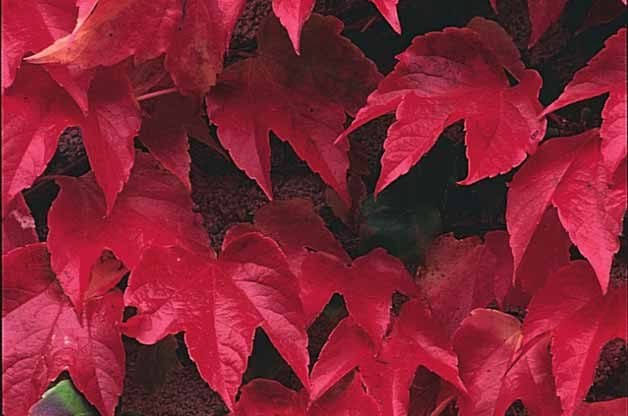
Boston Ivy
(Parthenocissus tricuspidata, Zones 4-9)
Providing foliage that changes in color with the season, Boston ivy grows to 60 feet high and produces green foliage that turns reddish-purple in autumn. This vine is invasive in some areas (especially the Northeast). Plant with care in other areas, and don’t grow up wood or vinyl siding.
Why we love it: Sticky tendrils shinny up most surfaces. Dark-blue berries attract birds in fall.
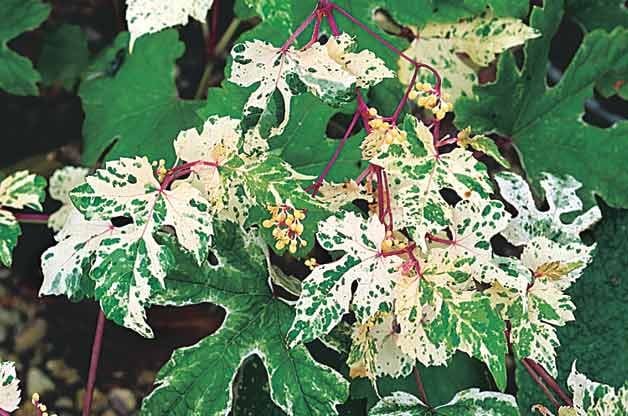
Porcelain Vine
(Ampelopsis brevipedunculata, Zones 4 to 8)
This vine is all about the berries! Come fall, 20-foot stems are covered with showy light-blue fruits that shade to porcelain blue as they ripen. Elegans is even lovelier, with pink and white variegated leaves. Avoid growing this beauty where it’s listed as invasive.
Why we love it: Large grapevine-like leaves provide growing-season appeal and spotlight the fall berries sprouting on inner stems.
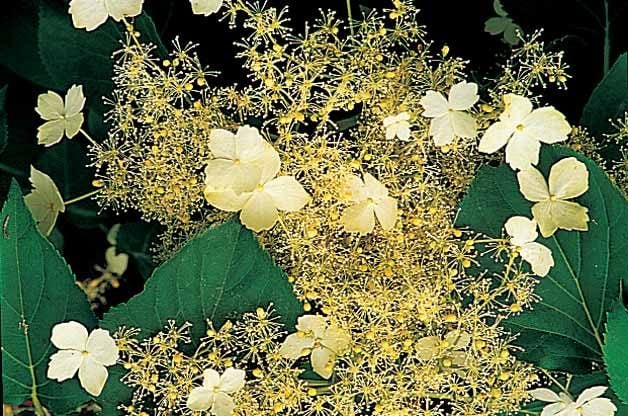
Climbing Hydrangea
(Hydrangea anomala petiolaris, Zones 4-8)
Though this clinging plant takes a few seasons to become established, you’ll find its lightly scented white lace-cap flowers well worth the wait. Leaves on these sturdy plants change to yellow with frost. Branches boast exfoliating bark.
Why we love it: A riotous grower with 80-foot stems and a broad reach, climbing hydrangea inexpensively and extravagantly cloaks fences, sheds and arbors. Do not grow on wood or vinyl sided buildings.
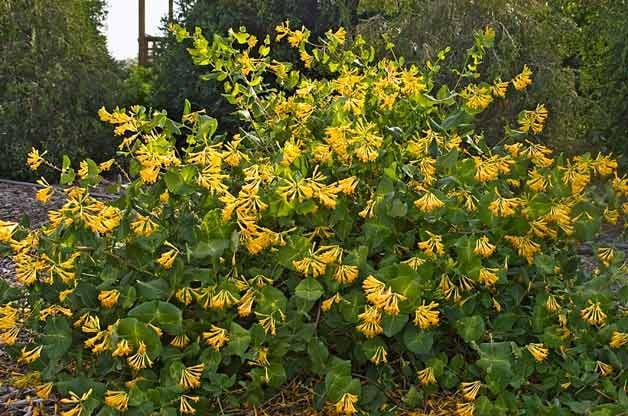
Trumpet Honeysuckle
(Lonicera sempervirens, Zones 4-9)
You’ll marvel at the flowers blanketing these fast-growing vines from summer though fall. Try Major Wheeler, which bears bright-red blossoms and is said to be more mildew resistant than most.
Why we love it: The tubular blooms, often orange or red with yellowish centers, attract butterflies and hummingbirds like crazy. Little scarlet berries provide food for birds.
Grow Fall Vines for Wildlife
Native vines provide shelter, food and nectar to resident and visiting wildlife precisely when they need it. Here’s a look at a few North American native vines that deserve a spot in your wildlife garden.
- Trumpet creeper (Campsis radicans, Zones 4-9): A prolific vine bearing late-season orange or scarlet trumpet flowers that attract bevies of hummingbirds.
- Wild passion flower (Passiflora incarnata, Zones 5-9): A larval host plant for an array of butterflies, this vine features striking fringed flowers that supply nectar to butterflies from July through September. Edible fruits called maypops mature in fall to feed the birds.
- Virgin’s bower (Clematis virginiana, Zones 4-9): Densely growing plant that flowers from July through September and supplies birds with shelter, nesting sites, nest-building materials and seeds that persist into winter.